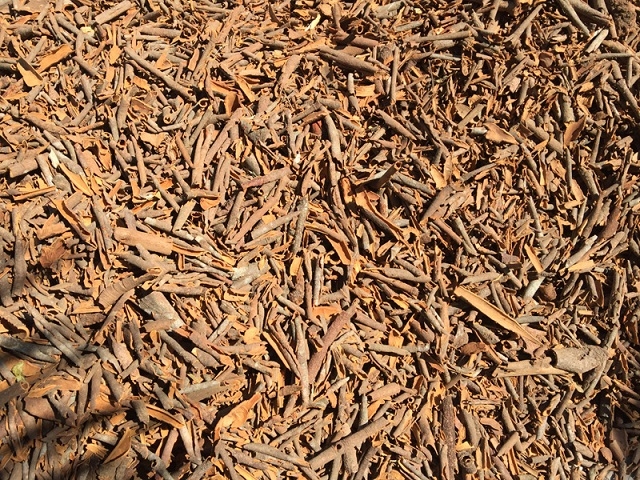5 Costly Mistakes Buyers Make When Sourcing Broken Cassia
5 Costly Mistakes Buyers Make When Sourcing Broken Cassia
📌 Table of Contents
- Introduction: Why Sourcing Matters More Than Ever
- Mistake 1: Not Verifying the True Origin of Broken Cassia
- Mistake 2: Ignoring Export-Grade Quality Standards
- Mistake 3: Overlooking Moisture and Mold Issues
- Mistake 4: Choosing Price Over Traceability
- Mistake 5: No Pre-Shipment Inspection or Lab Testing
- How to Source Safely and Efficiently from Vietnam
- Why Tinimex?
- Conclusion and Contact
1. Introduction: Why Sourcing Matters More Than Ever
Broken Cassia is fast becoming a top choice in the global spice trade due to its affordability and versatility in food, pharmaceutical, and incense industries. But sourcing it the wrong way can cost you dearly—through lost shipments, poor product quality, or even brand damage.
This guide explores 5 costly mistakes buyers make when importing broken cassia—and more importantly, how to avoid them.

2. Mistake 1: Not Verifying the True Origin of Broken Cassia
Vietnamese broken cassia is known for its strong aroma and high oil content, but many suppliers mislabel products to benefit from the reputation of Vietnam without the quality to back it up. Always demand full documentation including:
- Certificate of Origin
- Harvest and processing location details
- COA (Certificate of Analysis)
Tip: Ask your supplier to provide actual photos and videos of their processing line.
🔗 Related: Why Vietnamese Broken Cassia Dominates Global Markets
3. Mistake 2: Ignoring Export-Grade Quality Standards
Many buyers receive shipments that look nothing like the samples. Export-grade broken cassia must meet clear standards:
- Moisture content below 13.5%
- Even cut sizes (e.g. 3–6cm or mixed)
- No mold, pests, or foreign objects
Ignoring these criteria often leads to customs rejection or loss of entire batches.
🧪 Solution: Always request a lab test before confirming the order.
4. Mistake 3: Overlooking Moisture and Mold Issues
In tropical climates, poor drying practices lead to mold—one of the top complaints from bulk importers.
Avoid this by:
- Asking about sun vs machine drying
- Requiring sealed packaging with inner lining
- Verifying moisture content via lab test
A moisture meter reading is one of the simplest ways to avoid mold contamination.
5. Mistake 4: Choosing Price Over Traceability
It’s tempting to choose the lowest bidder. But cheap products often mean:
- Mixed or adulterated batches
- Untracked sourcing
- Lack of quality control
Traceability gives importers leverage, helps with recalls, and builds long-term confidence in your supply chain.
🔗 External Reference: FAO Guidelines on Traceability in Spices
6. Mistake 5: No Pre-Shipment Inspection or Lab Testing
This is perhaps the most critical mistake. Without pre-shipment inspection, you risk:
- Receiving incorrect sizes or grades
- Moisture/mold contamination
- Foreign objects or dust in bulk bags
Solution: Hire a third-party inspector like SGS or Bureau Veritas. Better yet, work with exporters like Tinimex who offer pre-shipment inspection and video documentation.
7. How to Source Safely and Efficiently from Vietnam
When importing from Vietnam, consider these safe practices:
- Verify certification (HACCP, COA, Organic)
- Request 3–5kg samples with batch code
- Inspect packaging options: carton boxes, PP bags with liner
- Compare FOB vs CIF pricing with transparent quotes
- Choose suppliers with proven international clients
🔗 Learn More: How Tinimex Supports International Buyers
8. Why Tinimex?
Tinimex is a trusted exporter of Vietnamese broken cassia, supplying wholesalers and spice importers across the globe. Our advantages:
✅ Custom cut sizes: 1–3 cm, 3–6 cm, mix grades
✅ Consistent aroma and oil content
✅ Certified (COA, HACCP, Organic on request)
✅ Fast delivery: 7–15 days
✅ Competitive FOB and CIF pricing
🌐 Website: www.tinimex.com
📧 Email: info@tinimex.com
📞 Hotline / WhatsApp / Zalo: +84 36 680 8683
📍 Office: 4th Floor, No. 40 Ngo Gia Tu, Long Bien, Hanoi, Vietnam
9. Conclusion and Contact
Avoiding these 5 costly mistakes can mean the difference between a profitable import cycle and a nightmare shipment. From verifying origin to third-party inspection, sourcing broken cassia is all about diligence, traceability, and the right partner.
Let Tinimex help you reduce risk and increase profit in your spice supply chain. Contact us today for a detailed quotation, samples, or sourcing consultation.
Internal Link: Explore More Cinnamon Products
External Link: Spice Board of India – Quality Standards

